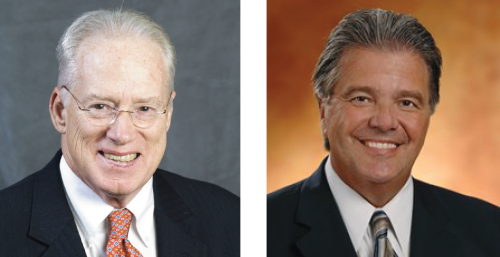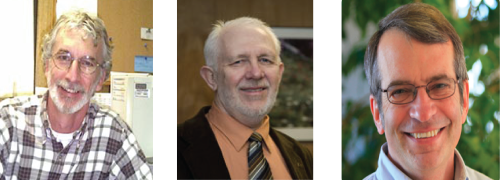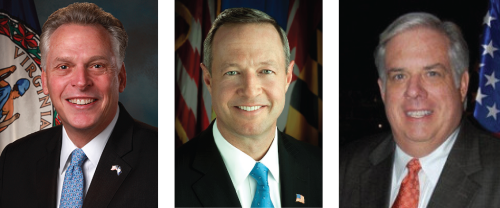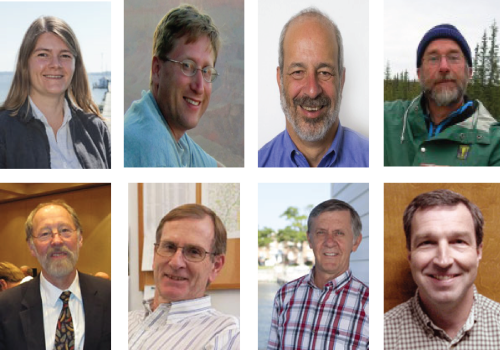2015 promises to be an exciting year for Chesapeake Bay
Bill Dennison ·There are many changes ahead in 2015, including new leadership in academia, government and science, management strategies for the 2014 Chesapeake Watershed Agreement, a major Conowingo research effort, and new staffing at the Chesapeake Bay Program.
Academic leadership. The Chancellor of the University System of Maryland, Brit Kirwin, is retiring after his distinguished tenure and his successor has been named, Bob Caret. Bob was the President of Towson University and is currently President of the University of Massachusetts and he will take over from Brit in July. Bob understands the key role of Chesapeake Bay in Maryland. The University System of Maryland is comprised of 12 universities, including the University of Maryland, College Park and the University of Maryland Center for Environmental Science (UMCES). The Chesapeake Research Consortium (CRC), an amalgamation of key academic and research organizations with a research focus on Chesapeake Bay and its watershed is undergoing a change in leadership, with the retirement of Kevin Sellner. The Appalachian Laboratory, part of UMCES, located in Frostburg, Maryland has a new Director, Eric Davidson, who is replacing Bob Gardner who recently retired. Eric comes from the Woods Hole Research Center and studies the nitrogen cycle and has worked with agricultural community to find solutions to reduce nitrogen runoff--an appropriate topic for Chesapeake Bay.


Government leadership. The new Chair of the Chesapeake Executive Council of the Chesapeake Bay Program is Terry McAuliffe, Governor of Virginia, succeeding Martin O'Malley, outgoing Governor of Maryland. Governor McAuliffe participated in the signing of the 2014 Chesapeake Watershed Agreement and he stressed his commitment to Chesapeake Bay restoration. The Chesapeake Executive Council is comprised of the Governors of the six states in the Chesapeake Bay watershed (New York, Pennsylvania, Maryland, West Virginia, Delaware, Virginia) as well as the Mayor of Washington, D.C., Administrator of the Environmental Protection Agency, Secretary of the U.S. Department of Agriculture and the Chair of the Chesapeake Bay Commission, a legislative assembly of Pennsylvania, Maryland and Virginia legislators. The newly elected Governor of Maryland, Larry Hogan, has nominated his Bay Cabinet to be the following: Ben Grumbles, Secretary of Environment; Charlie Evans, Secretary of Natural Resources; Joe Bartenfelder, Secretary of Agriculture. In his campaign, Governor-elect Hogan has stressed the importance of maintaining the funding stream for the Bay Restoration Fund.


Scientific leadership. The inaugural meeting of a newly formed team of agency and academic scientists focused on Chesapeake Bay called the Integrated Trends Analysis Team occurred on 12 Nov 2014. The leadership of this team supporting the Chesapeake Bay Program (CBP) represents a new generation of scientists. Dr. Jeremy Testa, recently hired at the Chesapeake Biological Laboratory (CBL), University of Maryland Center for Environmental Science (UMCES) co-chairs the team with Joel Blomquist, US Geological Survey. Two recent hires at the Chesapeake Bay Program are key partners in this effort: Drs. Jeni Keisman (USGS @ Chesapeake Bay Program) and Rebecca Murphy (UMCES @ Chesapeake Bay Program). Active members include Drs. Lora Harris (CBL UMCES) and Mark Brush (Virginia Institute of Marine Science), two junior faculty members at their respective institutions. In addition, these young scientists are benefiting from continued involvement of senior scientists like Bob Hirsch and Dick Smith (USGS), Elgin Perry (Consultant) and Michael Kemp, Walter Boynton, and Tom Fisher (UMCES).

Management Strategies. In addition to these changes in academic, government and science leadership, there are other exciting things ahead for Chesapeake Bay in 2015. One of these changes will be the institution of management strategies developed by the six Goal Implementation Teams of the Chesapeake Bay Program. These management strategies are the plans to implement the thirty goals of the 2014 Chesapeake Watershed Agreement. This represents a shift in the approach to Chesapeake Bay restoration, providing a more focused approach by the newly empowered Goal Implementation Teams. The Scientific and Technical Assessment and Reporting team, which I co-chair with Mark Bennett and Scott Phillips from USGS has formed a new Climate Change Workgroup and is focused on revamping the Chesapeake Bay monitoring effort through the Building and Sustaining Integrated Networks (BASIN) effort.

Conowingo research. A major research initiative by the Maryland Department of Natural Resources, University of Maryland Center for Environmental Science and U.S. Geological Survey is being initiated to study the impact of Conowingo dam on Chesapeake Bay. The Conowingo dam is located near the mouth of the Susquehanna River near the head of Chesapeake Bay. It was constructed in 1930 and the reservoir behind the dam has slowly silted up, reducing the trapping efficiency which has essentially served as the largest Best Management Practice for Chesapeake Bay, capturing sediments, nutrients and toxicants that would have otherwise entered the Bay. The silting up of the reservoir means that smaller and smaller runoff events lead to plumes of dirty river water entering Chesapeake Bay.
New Chesapeake Bay Program staffing. We have recently hired several new staff (UMCES @ CBP) to support the Chesapeake Bay Program. We were fortunate in that we were invariably able to attract out first choices from extensive searches, resulting in highly qualified and motivated people filling newly created or repurposed positions. The abilities of these staff to analyze and interpret environmental data and develop effective data visualizations and web-based tools to create a better understanding will aid the overall Chesapeake Bay restoration effort. These new hires include Jamieson Colburn, Zach Friedman, Catherine Krikstan, Rebecca Murphy, and Bill Whorton.

I am excited about what these many changes could mean for Chesapeake Bay in 2015. The infusion of new blood into the restoration effort could bode well for the Bay. We have a new agreement in place providing focus, we have talented people in place providing expertise and energy, and we have developed some positive momentum in various restoration efforts.
About the author
Bill Dennison

Dr. Bill Dennison is a Professor of Marine Science and Vice President for Science Application at the University of Maryland Center for Environmental Science.

